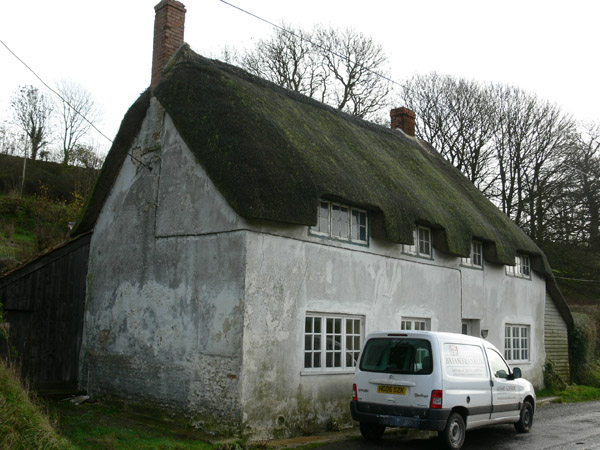Damp Proofing in Old Buildings
This article is intended to follow on from 'Mortars for Repair and Conservation'.
This is certainly one area of our conservation work that seems to concern our clients the most. Partly this is because of the differing advice and methods of repair that non conservation builders give and repairs they can provide. Let us start by saying that we do not advocate repair methods that cover or disguise the damp, provide a barrier to the damp or the use of chemicals to attempt to provide a damp proof course. Rather we advocate repair methods that understand how old walls were built and how they were designed to shed water naturally to achieve an acceptable balance of moisture content in the solid walls which changes with the weather and seasons.
As explained in the above article, older buildings have solid walls with no damp proof courses. They often have an outer and inner skin of brick or stone with a masonry core. They were designed to absorb water from rising damp, rain surface run down and condensation and then shed this moisture externally by evaporation in the wind and sun or internally by smaller air circulation.
The traditional repairs that we carry out follow these original design criteria. Therefore, if external walls have been re-pointed with non porous sand and cement we will replace them with a porous lime and aggregate mortar. If external walls have been rendered with sand and cement, we will replace these with a suitable lime render. Modern paints also provide a barrier to the walls shedding water, therefore we use lime based breathable paints. Internal walls need similar treatment. Bitumen painted barriers must be removed, boarding and insulation fitted below dado rails act merely to disguise the problem, cement and gypsum renders and plaster prevent water movement and modern paints too are bad news. A suitable lime render and a breathable paint would be the answer.
The drying process for very damp walls which have not been able to breathe for many years does take time, perhaps 6-12 months in extreme cases, but given time and the right repairs the walls of old houses will dry out and a healthy equilibrium of moisture will return.
Let us touch on the use of suitable paints. Most of the large paint companies now carry the complete range of colours in breathable paints. There is no reason why you cannot match existing colour designs. Internally colours are fairly consistent but they will become darker towards ground level if the walls are damper there, but will dry out to the same colour as the seasons and climate changes. Externally these colour changes are more noticeable and colour changes after rain but will dry back to the original colour soon afterwards. The cleaning repair of modern paint on to brick or stone must be a subject for later. Suffice it to say it is a barrier to the walls breathing and as such could need attention.
Lastly, there are many other reasons why walls could be damp. These can be addressed after inspection of the house and a repair plan prepared. If you have damp issues with your property or are concerned about damp in a potential property purchase we do offer bespoke advice - Old Property Consultation and Advice
